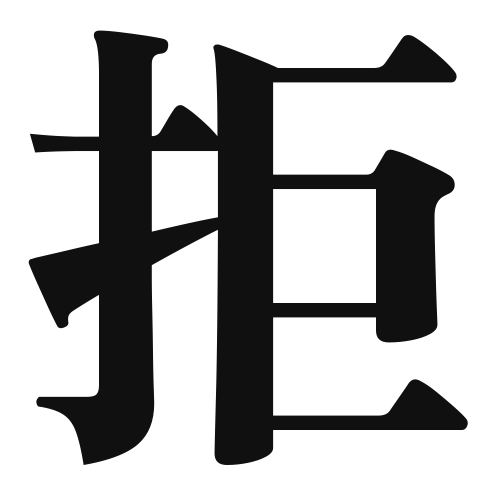1. Overview of Meaning
The kanji “拒” (kyo) means “to refuse” or “to reject.” It conveys the idea of pushing something away or not accepting it.
2. Formation and Radical
Formation of the Kanji: The kanji “拒” is a compound character (会意文字) that combines elements to convey its meaning. It consists of the radical “扌” (hand) and the character “去” (to go away), symbolizing the action of pushing something away with the hand.
Radical: The radical of “拒” is “扌,” which relates to actions performed by the hand.
3. Examples of Usage
Common Words and Phrases: Some common words that include “拒” are “拒絶” (kyozetsu – rejection) and “拒否” (kyohi – refusal).
Example Sentences in Daily Conversation:
- 彼はその提案を拒否した。 (He rejected the proposal.)
- 私たちはその条件を拒絶する必要があります。 (We need to refuse those terms.)
4. Synonyms and Antonyms
Similar Kanji: A similar kanji is “断” (dan), which also means “to refuse” but often implies a more decisive or final rejection.
Opposite Kanji: The opposite of “拒” is “受” (ju), which means “to receive” or “to accept.”
5. Cultural and Historical Background
Relation to Japanese Culture: The concept of refusal is significant in Japanese culture, where politeness and indirect communication are valued. Refusing something can be done in a subtle manner.
Proverbs and Idioms: One relevant proverb is “断るは受け入れるの始まり” (Kotowaru wa ukeireru no hajimari), which means “Refusal is the beginning of acceptance,” highlighting the importance of setting boundaries before accepting something.
